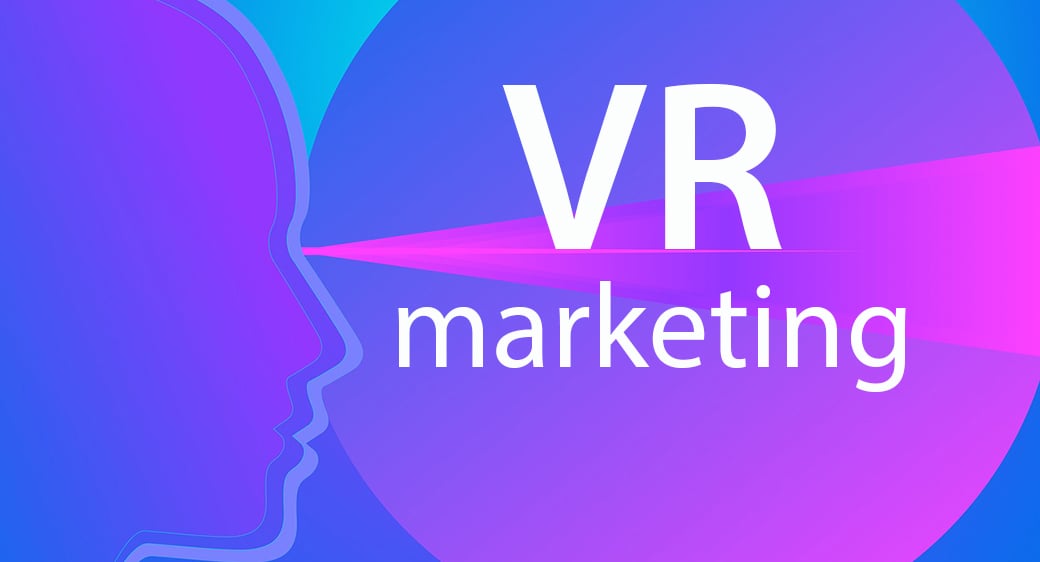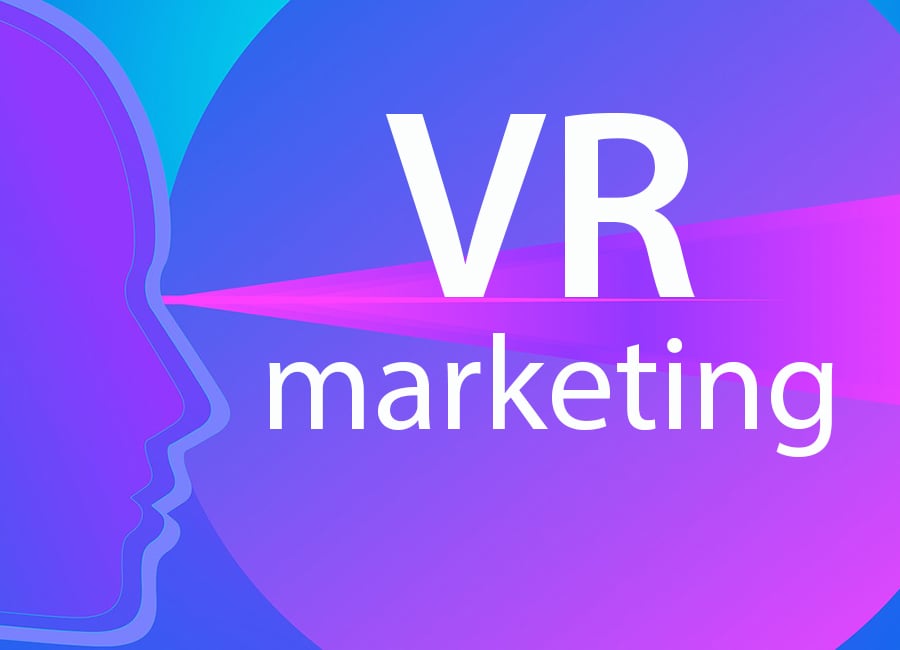Many companies, businesses, and organizations are still yet to experience the world of virtual and augmented reality. However, both have been and are still being used by a larger percentage of the biggest brands in the world. These brands have integrated VR and augmented reality marketing into their marketing strategies as it is a powerful marketing tool.

Brands are using augmented and virtual reality to enhance their brand awareness. Virtual and augmented reality marketing could revolutionize today’s business world. The new wearable tech and video games have already incorporated AR and VR which is a clear indication that change is already taking place. Using full immersion, you can have a view of stories you had dreamt of, you can explore some of the best exotic places while at the comfort of your home and come across products as if you are physically seeing them. But what exactly are VR and AR, augmented reality marketing and what does it mean for business?
Let’s find out!
What Is Augmented Reality Marketing?
Marketing is the practices by which marketers, companies, businesses, and organizations use a variety of strategies to enable them to bring their products closer to their target customers. First, they do a market research to find out who their target customers are and what are their needs, then, they come up with campaigns so as to give their customers what they want and build long-term customer trust.
Augmented reality marketing is the latest form of strategy that brands are using together with some elements of print and digital advertising. This is the ideal approach that helps to distribute persuasive content to an audience that is aware of technology.
What Is Augmented Reality Advertising?
AR advertising overlay in-game characters and actions from the advertised game onto the game player’s actual environment where the player is then prompted to install the game to access it further.
Benefits of AR Advertising
Collaborating Experience
“The best way to bring people closer to your products and services is to instill unforgettable experience in them”- says Allen Gutten, an IT specialist and web developer at Superior Papers.
Games and advertising strategies that incorporate AR are capable of creating an interactive experience by personalizing the experience to the customer thus bringing people closer to brands.
Inventive Brand Image
AR advertising enables brand owners to place their brand image closer to the eyes of their users which in turn create intensified brand awareness. This is beneficial to brands that have already taken advantage of AR. Brands such a Starbucks, introduced their Starbucks Cup Magic app, which allows customers to animate their red cup together with holiday-themed characters. This makes their brand look real and remain in their users’ memory. Incorporating augmented reality and content is the better way to build brands, make it visible and make it interact with its users worldwide.
What Is Virtual Reality (VR)?
Virtual reality (‘VR’) is a term that aims at putting together any sort of experience that takes a user from one world to another or from one dimension to another dimension virtually. Virtual Reality (VR) allows a user to experience anything, at whatever place they are anytime. It is an immersive type of technology which can easily convince a human brain that it is in another world while it is not.
What Is Augmented Reality (AR)?
Augmented reality (‘AR’) is a technology approach of placing content to appear real in the eyes of people by using a camera on your iPhone. AR is different from VR in that virtual reality completely immerses a user in a computer-created world while AR superimposes computer-created images on the actual world. An example of AR is Pokémon GO.
How Augmented Reality Marketing and VR Advertising Is Changing the Future of Marketing.
Brands are taking augmented reality marketing and VR Advertising to greater heights throughout multiple industries such as construction, healthcare as well as manufacturing. Let’s find out how marketers are currently incorporating this AR advertising, VR marketing, VR advertising, augmented reality marketing and how it could change the future of marketing and ultimately change the views that people have when it comes to doing business.
Virtual Reality enables marketers to be able to give their customers a closer experience of the product, service or place without having the product or receiving the service and without having to visit the place physically. Marketers can use this technology to give their customers.
Real Experiences
Most hotels are currently using VR marketing and VR advertising to convince visitors that they can offer a fantastic experience even though the person has never been there before. Going through a brochure on a website, a visitor can actually get how the destination looks like, walk around the accommodation, and get other people’s views that have already been there, thus making a person to have an experience of what is offered there. This provides people with tangible experiences making them have a sense of what they can expect.
Product Experiences
VR reality can convince a customer that a product is better than the one they have had previously. The automotive industry uses VR advertising to enable customers to configure a car to their needs, enabling them to get a test drive without having the car physically.
Real Estate Industry
Real estate professionals are making use of VR 3D tours to enable customers to experience their property from wherever they are. This enables customers to have a real picture of the property without actually being there physically.
Educational Experiences
For production companies, using VR, as well as using AI in education, can make them to creatively take their customer through a step by step process of their production process. Making consumers know how the product is produced in an immersive way shows craft, and the current consumers are finding ways to know the origin and everything that takes place in the products they buy.
Retail Experiences
The retails industry is finding it difficult to implement the latest trends like displays and trade exhibitions and this is making them lose customers to their competitors. So why not take an opportunity and give your customers a whole retail world to explore in VR? Entice them with some inspirations so that they buy from you.
Recruitment
Getting the right candidate with the right skills to do a job can be difficult. Allowing candidates an opportunity to have a sense of what the job entails can help to attract the right people and see if they have the right skills for the job.
How AR and VR Advertising Is Being Used Currently
The current business arena if faced with competition and many players are trying to adopt strategies and paths to stand out from the crowd. They are inventing ways to attract the public attention and entice the prospective customers of their products and services.
Marketers and brands are finding ways to reach their target audiences in an affordable and effective way. From placing banners and posters on strategic locations to online marketing and online advertisements, the evolution of marketing has maintained the same pace. Every day brings a new trend in marketing. Brands have started making maximum use of Augmented Reality and Virtual Reality technologies to appeal the market towards their product.
In the past, these technologies were implemented in certain sectors such as the entertainment and fashion sector.
The Present AR and VR Use
Let us discover how different industries plan to use this technology (VR and AR).
Experience by Seeing
Industries such as the furniture, clothing and cosmetic sectors have launched apps that give consumers an interactive experience and appealing display of the real products. Initially, these apps, created in accordance with the latest mobile app design trends, were used for different purposes, like the cosmetics sector used such apps to show the outcome of using their products such as creams and moisturizers. Today, you do not have to get concerned of how you will look like after using a new hairstyle since AR technology can enable you to have a view of how it would be when using your new hairstyle.
Many big furniture brands have launched apps which come installed on the tablets to enable consumers chose and place their products anywhere they wish which makes them know whether it fits their needs and liking. VR technology can help in the making of models and create an immersive experience of the construction industry.
Virtual and augmented reality had been previously used in the gaming sector, but currently, brands are seeing this as an untapped opportunity to bring their products closer to their customers. Marketers have to take their products where their prospects are and augmented reality allows them the opportunity to interact with their prospects in a technological way.
Diverse Ways Marketers Can Use Virtual Reality
AR is diverse, developing and implementing it is hassle-free and also comes with multiple apps. However, the pace with which marketers are taking while implementing VR is a turtle’s pace, but steady.
Virtual reality is an incredible approach for brands to utilize immersive storytelling in a method that augmented reality is incapable of doing. Brands can utilize VR to enlighten people about how they started. This increases engagement and personal connection with the brand. In the travel industry, VR could be beneficial. Traveling to an exotic place while at the comfort of your home could help hotels and travel agencies make the most out of their sales.
The automotive industry would achieve a lot from incorporating VR into their marketing efforts by allowing somebody to have a test drive of your car virtually.
Conclusion
Marketers are always on the look for ways and technologies to advertise to consumers. VR marketing, VR advertising, AR advertising, virtual, and augmented reality marketing is latest technologies of immersion that can attract the attention of a technology-minded audience.
The hotel, manufacturing, health as well as the travel industry can benefit from incorporating these technologies. We are aware that VR technology is still in its infant stage to us. However, understanding its benefits for our marketing efforts can make us apply it in the promotion efforts of our products and services. Therefore, any marketer who still does not apply the idea of VR and augmented reality marketing, just gear up and apply these technologies on your own way to rock the world of marketing.
